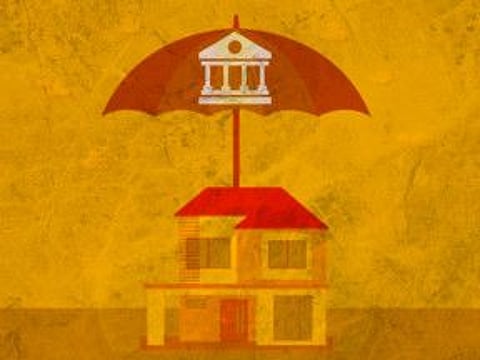UAE banks should be pushing mortgages to prop up property demand
History shows that properties backed by mortgages will eventually show a price spike

One of the central debates in real estate finance is about the role of credit on asset prices and whether they lead to bubbles that inevitably end in tears. This fear goes all the way back to the panic of 1792, when bankers led by William Duer in America, precipitated an expansion of credit to fuel speculation in asset markets.
Ever since then, the debate has always been about the deleterious impact of credit on the economy and the subsequent damage it inevitably causes. The key difficulty in measuring the effect of credit on the price of housing is establishing the direction of causality between credit conditions and house price growth (or contraction).
On the one hand, easier and cheaper access to credit reduces borrower financing constraints and increases the total demand for housing, which in turn leads to higher prices. Conversely, however, credit conditions might be responding to expectations of weaker housing demand, and as a consequence reduced house prices.
In the latter scenario, more expensive credit is not the driver of house price declines, but a by-product of reduced demand for housing, since housing as collateral becomes less valuable. Existing literature has shown that it is very difficult to separate these two effects.
Truly price secured
In Dubai, what the data tells us, that home that become eligible for financing with a confirming loan show an increase in house value of between 8-13 per cent, given the assumption of loan-to-value ratios being at 75-80 per cent (even after controlling for qualitative characteristics). The percentage increase is higher in communities that have a lower elasticity of supply (which is to be expected).
It also has a greater impact during downturns (such as the one that we are experiencing, where even in an environment of job losses, credit eligibility raises asset prices in a statistically significant and sustainable manner.
Make it happen
What this tells us about the market is that easier access to credit becomes the silver bullet for asset prices to rise. Moreover, developer incentives that strived to keep prices higher have for the most part not worked in the secondary markets, and banks remain the best and most reliable source for providing liquidity over price cycles.
In the current market, the critical lesson therefore is for banks to facilitate lending in an aggressive manner if there is to be a sustained revival in housing prices. None of this is of ourse surprising; even less surprising is the reluctance that banks would have in lending under conditions where asset prices have been trending lower for a while now.
Banks obviously have no vested interest in lending against declining collateral; the obvious conflict between “predator and prey” come to the fore here. But let us recall a bit of history here: back in 2008, delusions of eternal price increases sprouted.
Stories abounded of “flippers” who made fantastic profits within a matter of months. Credit at that time was flowing freely, at precisely the moment where caution needed to be exercised, but wasn’t.
Lessons learnt
However, after the first boom-bust cycle and the subsequent recovery, analysts started talking about a new idea: the existence of excess supply that rendered price levels unsustainable. There were obviously a number of other factors that were being discussed, but that sudden change is worth remembering, for it is a model for what might happen again one day.
That’s not where the narrative is today, with the economic situation being dominated by the pandemic. Despite the stimulus measures in place, there is a real fear that a raft of foreclosures could occur if banks are not supportive, with houses being dumped onto the market.
Clearly this is not in the interest of banks, and it appears given the intensity of public reaction, there might once again be a change in thinking. Data suggests that it might be unwise to be too risk averse; this applies to individual homeowners as well as for banks.
Credit, as well as risk taking behavior needs to be counter cyclical; this much is obvious. What is equally critical is that looking at the market cycle has to be instructive.
And just as unwarranted optimism carried prices away into the stratosphere, there is a fragile mindset that is overestimating home price risk at the moment. Policy responses will only go so far; ultimately, it is the mindset that has to undergo a shift.
I’m not making a prediction here, but history suggests that when it does, it will occur just as suddenly.

- Sameer Lakhani is Managing Director of Global Capital Partners.
Sign up for the Daily Briefing
Get the latest news and updates straight to your inbox







